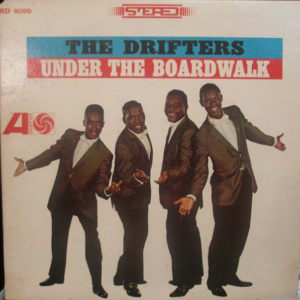Before I start this week’s windup, let me point you to a different podcast for a moment. The guys at the TMDR Podcast describe their show as being simultaneously about nothing and about everything, but they keep the shows confined to a couple of topics. I’ve been listening in on their discussions of the HBO series Westworld, and just this week they did a show where they spent some time reviewing several different podcasts, How Good It Is being among the shows they reviewed.
 I have to say, I was blown away by the level of praise they gave to the show, and I just wanted to thank them yet again, and offer up this link (click on their logo at right). Go check them out; I think you’ll have some fun.
I have to say, I was blown away by the level of praise they gave to the show, and I just wanted to thank them yet again, and offer up this link (click on their logo at right). Go check them out; I think you’ll have some fun.
Back in the mid-1980s I went to a Fourth of July event on Long Island. Among the pre-fireworks entertainment was music provided by The Drifters. What I didn’t realize at the time was that there were LOTS of ex-Drifters simply, er, drifting about, and many of them had gotten together and were touring as The Drifters. What’s more, all of these groups could legally do so in many places around the country.
As it happened, I was young and naive, and kinda-sorta listening to their lead singer and the way he was singing staccato style, because he was older and couldn’t hold his notes for any appreciable length of time.
So did I see The Drifters or did I see “The Drifters”? There’s an element of “both” in my eyes, because there were so many people paid to be one of The Drifters that this group could easily be made up of former members. But that didn’t mean I was watching Ben E. King or Clyde McPhatter.
 “Under the Boardwalk” was recorded the day after their lead singer Rudy Lewis died. They recruited a former member from several years ago, and before long a new version of the group had cranked out their second-biggest hit.
“Under the Boardwalk” was recorded the day after their lead singer Rudy Lewis died. They recruited a former member from several years ago, and before long a new version of the group had cranked out their second-biggest hit.
As usual, your podcatcher software should already have this, but if it doesn’t, you can always play it back right here:
Or, if you’re so inclined, you can go directly to the Podomatic site and download it on your own. And please leave a review wherever you get your shows from, it really helps drive traffic. Thanks!









 “Under the Boardwalk” was recorded the day after their lead singer Rudy Lewis died. They recruited a former member from several years ago, and before long a new version of the group had cranked out their second-biggest hit.
“Under the Boardwalk” was recorded the day after their lead singer Rudy Lewis died. They recruited a former member from several years ago, and before long a new version of the group had cranked out their second-biggest hit.